Continuing to the south from Section A, we enter Section B and find a marker that is unusual because it does not mark a grave. It reads "In Memory of the deceased of the Jasper County Infirmary erected by Jesse and Inez O Nichols." Other names for the Infirmary were the Poor Farm and the County Home. It was a place where mostly old people who had no family and could not take care of themselves were housed. With the development of various federal income-support programs, the need for this sort of institution disappeared.
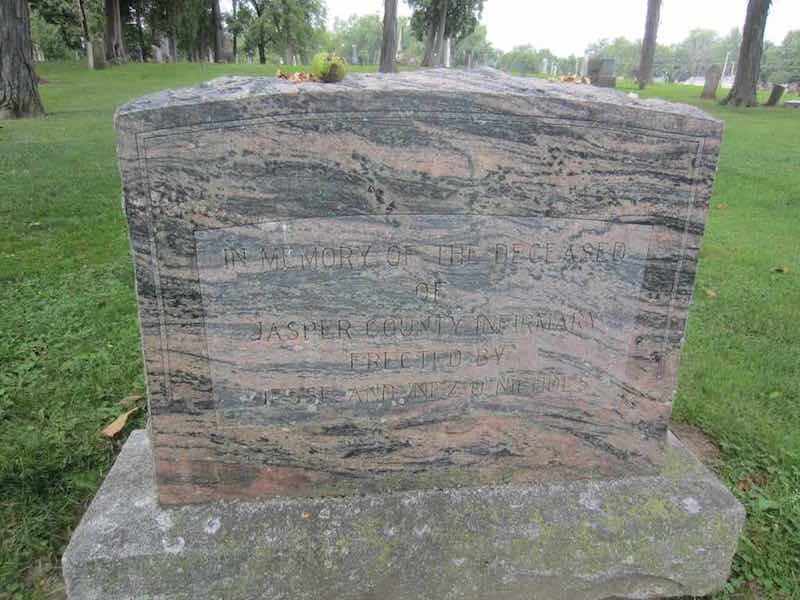
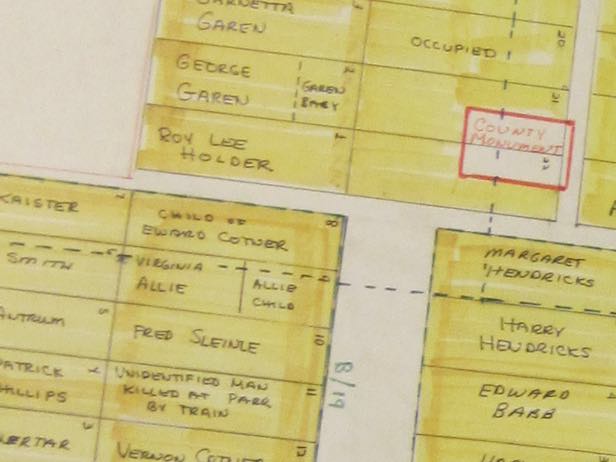
To the east and south there are family plots. Near the eastern edge is the grave of Ernest Prouty who, as a large stone plaque on his grave informs us, died as a result of wounds suffered in the line of duty as a deputy sheriff.
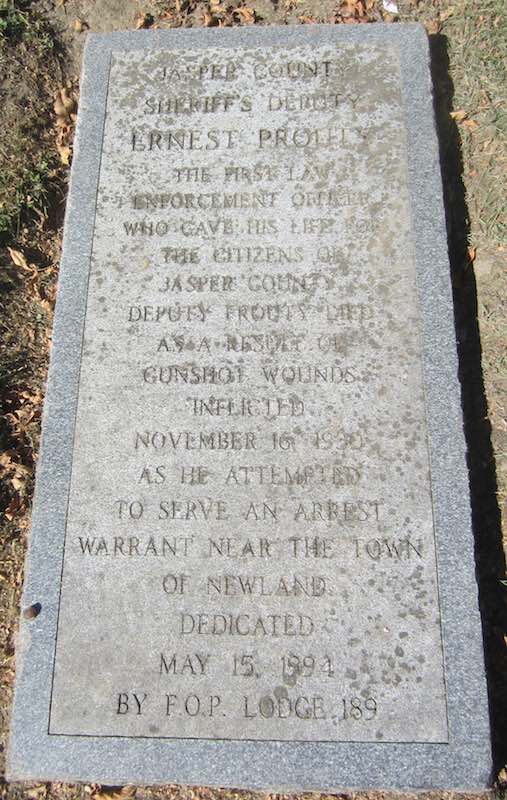
To the west is Babyland, an area in which many infants and very young children are buried. If a family owned a cemetery lot, they normally would bury their deceased infants in the family lot, but if the family did not have a lot, they could purchase one of these small lots for burial.
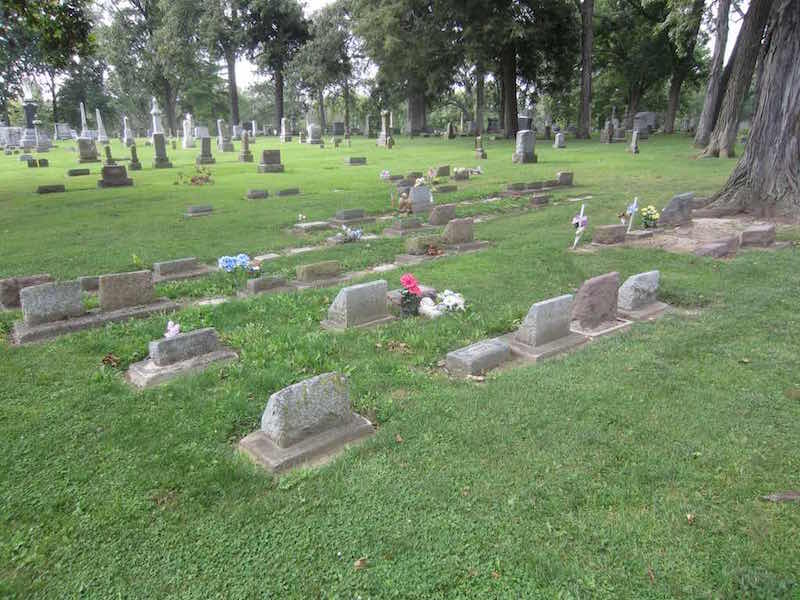
Arriving at the road along the river, we turn west and walk a bit to the start of Section C and an area that has no big markers but quite a few very small ones. This was another area of county burials and in this area the coffins are packed as closely together as possible. In recent years the Cemetery has added small metal markers to many of these burials.
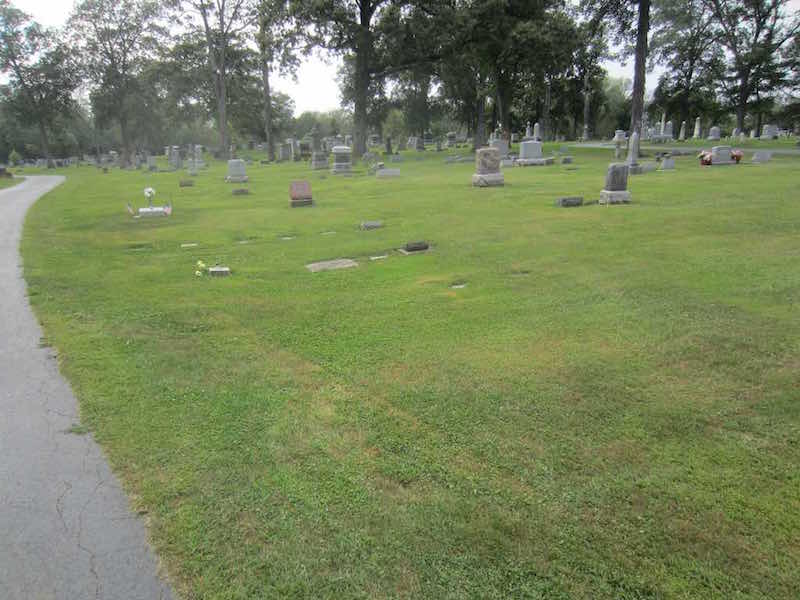
From the County burials we walk to the northwest. As we approach the road where it bends, we find markers for the Dwiggins. Here is buried a man with an unusual name, Zimri Dwiggins, who has an equally unusual life story. Dwiggins became involved in banking in northwest Indiana and eventually moved to Chicago where he became head of two interrelated institutions, the Columbia National Bank and the United States Loan and Trust Company. He sold bonds, using the proceeds to buy stock of small banks. When the Panic of 1893 began, his financing arrangement failed as did the Columbia National Bank. Some reports accuse him of fraud while others report that he had taken on too much risk. Although failure of Columbia National Bank did not initiate the Panic of 1893—it was caused by forces far larger—the bank's failure, which was the result of the financial structure that Dwiggins developed and used, helped perpetuate and spread the Panic.
Dwiggins died in December, 1907 in Nebraska where he was manager of a life insurance company. He probably was brought back to Rensselaer for burial because he had purchased a lot to bury two children who died in the 1880s. There are not many people who play a newsworthy though minor role in a financial panic, but one of the few is buried in Weston Cemetery.

The Dwiggins grave is next to the road that separates Section C from Section D. We cross the road and head east, toward the tall maker topped with the statue of a lady.
- Introduction
- From the Entrance to Section A
- Sections B and C
- Sections D and U
- Section G
- Across The Creek to The Bridge
- Section P and Westward
- Sections M, L, K and the New Addition